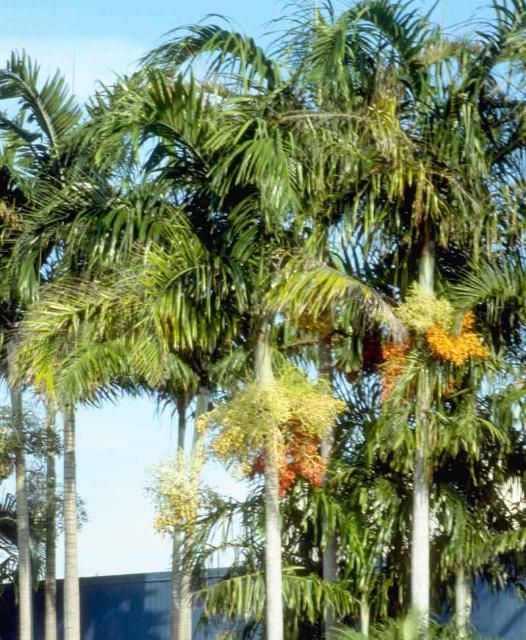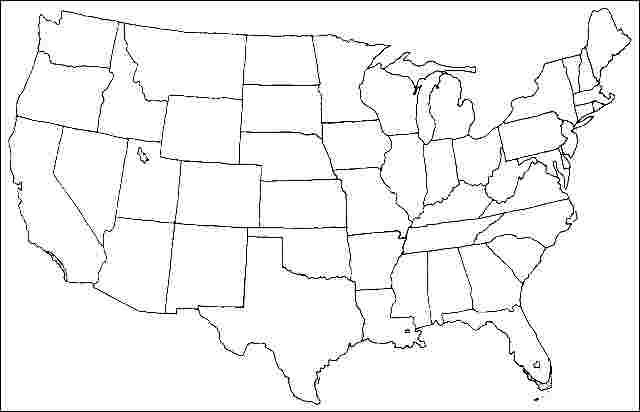Introduction
This fast-growing palm tree quickly grows to a height of 40 feet, the smooth grey trunk topped with 10-foot-long, spreading green fronds. The inconspicuous white flowers appear from spring through fall and are followed by the production of bright red fruits that are less than one-inch long. The juice from these fruits can cause a skin irritation. Once highly recommended as a replacement for the Christmas palm, which is very susceptible to lethal yellowing disease, Carpentaria palm apparently requires a richer soil than many landscapes can provide. It is also susceptible to trunk cracks in cool weather, a condition that opens the trunk to decay organisms.

Credit: Ed Gilman
General Information
Scientific name: Carpentaria acuminata
Pronunciation: kar-pen-TAIR-ee-uh ack-yoo-min-NAY-tuh
Common name(s): Carpentaria palm
Family: Arecaceae
USDA hardiness zones: 10B through 11 (Figure 2)
Origin: not native to North America
Invasive potential: little invasive potential
Uses: indoors; specimen; deck or patio; container or planter
Availability: not native to North America

Description
Height: 35 to 40 feet
Spread: 8 to 10 feet
Crown uniformity: symmetrical
Crown shape: palm, upright/erect
Crown density: open
Growth rate: fast
Texture: medium
Foliage
Leaf arrangement: spiral
Leaf type: odd-pinnately compound
Leaf margin: entire
Leaf shape: linear
Leaf venation: parallel
Leaf type and persistence: evergreen
Leaf blade length: more than 36 inches
Leaf color: green
Fall color: no color change
Fall characteristic: not showy
Flower
Flower color: white/cream/gray
Flower characteristics: not showy
Fruit
Fruit shape: round
Fruit length: .5 to 1 inch
Fruit covering: dry or hard
Fruit color: red
Fruit characteristics: does not attract wildlife; showy; fruit/leaves not a litter problem
Trunk and Branches
Trunk/bark/branches: branches don't droop; not showy; typically one trunk; thorns
Pruning requirement: little required
Breakage: resistant
Current year twig color: not applicable
Current year twig thickness:
Wood specific gravity: unknown
Culture
Light requirement: full sun
Soil tolerances: clay; sand; loam; slightly alkaline; acidic; well-drained; occasionally wet
Drought tolerance: moderate
Aerosol salt tolerance: low
Other
Roots: not a problem
Winter interest: no
Outstanding tree: no
Ozone sensitivity: unknown
Verticillium wilt susceptibility: resistant
Pest resistance: resistant to pests/diseases
Use and Management
Carpentaria palm is probably best suited for an occasional accent or specimen planting where temperatures stay warm in the winter. A number of them grouped together can be attractive. Choose the best soil on your site for planting this palm.
Carpentaria palm should be grown in full sun on rich, moist but well-drained, fertile soil, and it has a low tolerance for salt and drought.
Propagation is by seeds.
Pests
Thrips.
Diseases
No diseases are of major concern.